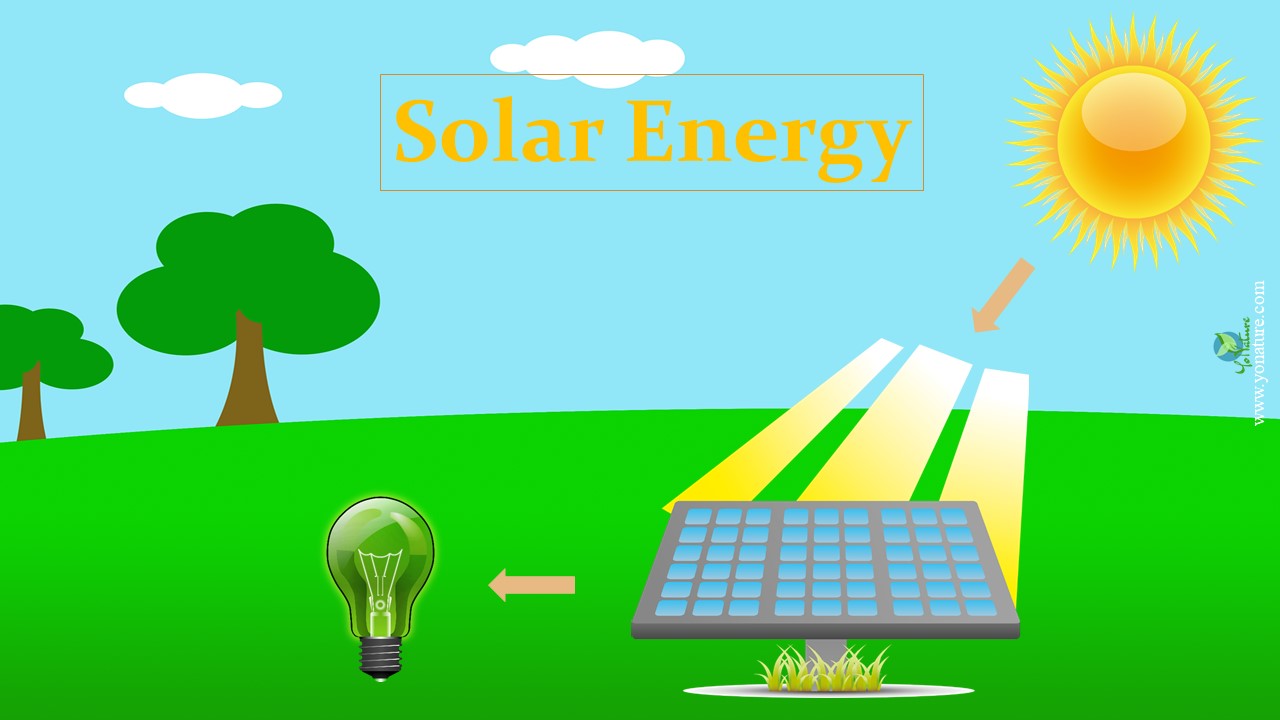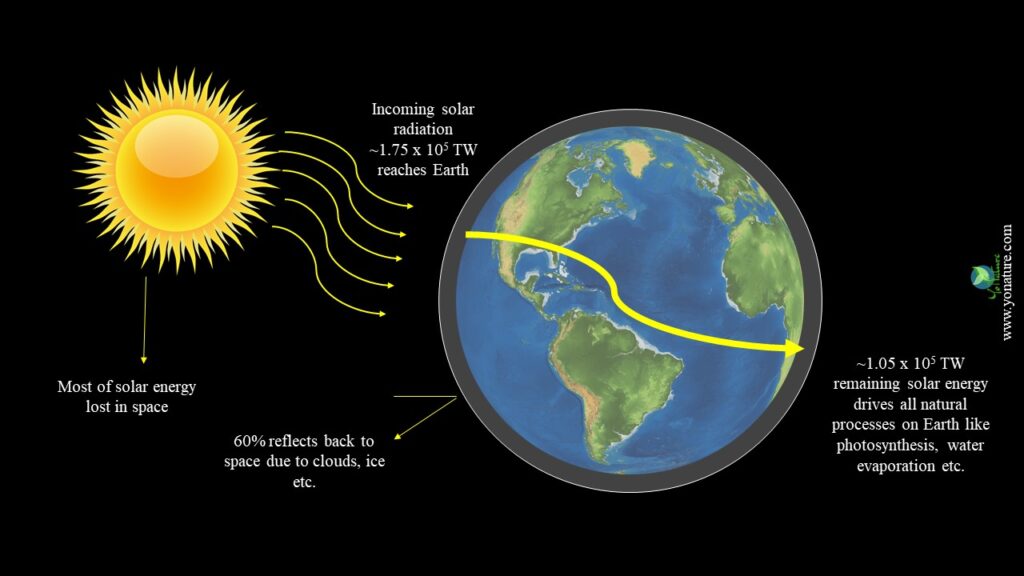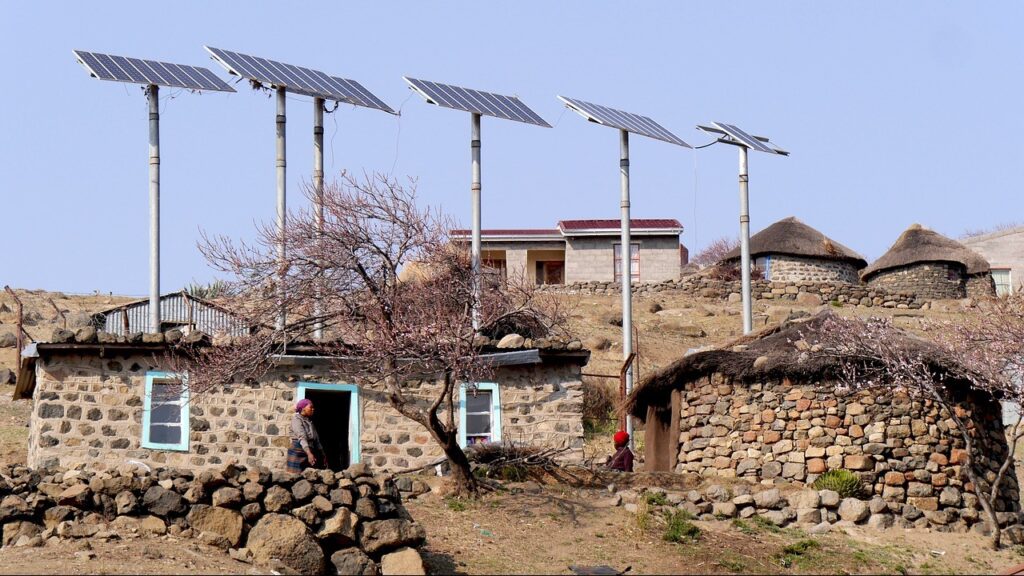Solar Energy Explained: Advantages and Disadvantages

Solar energy is the power that comes from the sun’s radiations. It is not a new principle; mankind has exploited free solar power as long as it has existed. In fact, every civilization used this energy to improve its living standards in its own way.
Today, solar energy is developing steadily as the world demand for energy increases. At the same time, conventional energy sources like fossil fuels are also decreasing. Consequently, people are investing a lot of money and time in exploiting solar radiation as a clean and accessible source of energy.
Solar radiation
As the sun shines, it fans out energy in the form of radiation. Radiation refers to the energy that the sun emanates in the form of waves such as heat and light.
Basically, nuclear reactions inside the Sun maintain an inner temperature of 16 million °C and a surface temperature of 5700 °C. As it is, the Sun radiates energy at a wavelength and rate that depends on its actual temperature.
In general, the amount of sunlight that reaches the Earth continuously is 1.75 x 105 TW. This is mostly in the form of heat, visible and ultraviolet light. Of that amount, 60% is reflected back into space due to cloud cover.
Thus, the remaining energy, accounting for 1.05 x 105 TW, drives all natural processes on Earth. This includes photosynthesis, direct heating, waves, tidal currents, evaporation of water among others.

However, exploiting solar power is quite challenging. While some countries boast of a near-constant solar energy supply, they lack the finance and manpower to exploit it.
History of solar energy
As a matter of fact, people have been using light and heat from the sun intuitively since early mankind. In the 5th century, the Greeks designed their homes to trap sunlight during winter. Over the years, the Romans also adopted a similar approach. They covered south-facing windows with materials like mica and glass to capture sunlight.
Then in the 1760s, Horace de Saussure built an insulated box to trap sunlight. This instrument eventually became the prototype for modern solar water heaters.
Developing solar energy technologies
It was in the late 19th century that scientists in Europe and the United States developed solar energy technologies (SET). In 1839, nineteen-year-old French physicist, Edmund Becquerel, discovered the photovoltaic effect. He found out that some substances could produce small amounts of electricity when exposed to light. Later in 1878, French mathematician, August Mouchet, created the first solar-powered steam engine.
Nevertheless, research into solar energy was very expensive at that time and governments were not willing to invest in it. Also, fossil fuels were cheap then and their downsides were not well understood.
Availability of solar power
Today, however, the situation has turned around. Solar energy is becoming increasingly popular as a source of perpetual power and a supplement to fossil fuels.
By 2040, the global energy demand will reach approximately 8-9 TW. Strikingly, solar radiation on only 1% of the Earth’s surface can yield up to 104 TW.
However, the amount of sunlight that hits any given location depends on several factors like geographic position, season, time of day and local weather.
Variations in solar output
Also, while the total radiation emitted by the Sun is almost constant, some variations can alter the amount of light that reaches Earth. This includes phenomena like solar flares, sunspots and prominences.
Nonetheless, these variations are quite small and generally neglected.
Countries that receive the most sunlight
As it currently stands, 93% of the global population lives in places where it is possible to exploit solar energy. In fact, some 70 countries have excellent conditions for solar energy potential with an average output of over 4.5 kWh/kWp.
It includes the Middle East, North and Sub Saharan Africa, Argentina, Australia, Mexico and Peru to name a few.
Uses of solar energy
We currently use various technologies to capture solar energy such as solar collectors, giant mirrors and sun trackers. This energy is then converted into heat (thermal energy) or electricity (photovoltaics or PV).
In general, houses, businesses and industries use solar energy to heat water and spaces as well as a source of electricity. It is also becoming a good source of power for traffic lights, street lamp poles and many transportation systems.
Advantages of solar energy
1. Renewable source of energy
The sun is one of the primary renewable energy sources that we know exist. Basically, it is an infinite resource that we cannot use up unlike common fuels such as oil and coal.
We can capture and harness energy from the Sun as long as it shines. In this respect, scientists estimate that solar activities will be ongoing for another 4 to 5 billion years.
2. Sustainable energy source
Additionally, solar energy is sustainable: we can use it now and future generations will also benefit from it.
Solar energy is readily available and we can use it over and over again. As we now gear towards a carbon-neutral energy production, solar energy is leading the way as a sustainable energy source.
3. Accessibility
What’s more, solar energy is easily accessible.
As it happens, many people around the world lack electricity due to various reasons. This could be because of ongoing wars, a lack of finance or manpower or the geographic location itself. As the sun shines everywhere, the potential to harness solar energy exists.
4. Saves energy
In general, some 8-15% of energy is lost from electricity power plants to consumers. Actually, we lose most of this energy through transmission lines and distribution cables. Thus, the longer the distances, the more energy we lose.
With solar energy technologies, there is a substantial decrease in the required transmission lines of electricity grids. Consequently, we save more energy by reducing the distance energy travels with solar panels/PVs.
5. Reduces environmental impacts
Years and years of using fossil fuels show that they have very damaging environmental impacts. In fact, today’s climate change is mostly associated with a rapid increase in greenhouse gases since the industrial revolution. Conversely, harnessing solar energy reduces the emissions of greenhouse gases like carbon dioxide and nitrous oxides.
Similarly, water quality also improves since there is less release of toxic materials into water bodies and on land. Additionally, promoters can reclaim degraded land for installing solar energy related paraphernalia.
6. Energy security
As it currently stands, the world is facing one perfect energy storm. Energy prices are rising with the reserves of conventional fuels plummeting. And energy is one of the most important resources for economic development, from agriculture to communication.
As the world population will continue to increase, energy demand together with modernization will rise. Consequently, we will be able to meet energy demands only by introducing alternative sources like solar energy.
7. Provides job opportunities
Solar energy technologies are indeed impacting positively on the lives of many people. Perhaps those in developing countries are benefitting the most as PV projects provide job opportunities.
The installation process requires manpower and thus local people can acquire jobs for such tasks.
8. Provides electricity in rural regions
To date, around one-third of the global population lives in rural regions without access to electric grids. In Africa alone, approximately 600 million Africans lack electricity access. Many poor nations can barely afford good living conditions, even less electricity.
Nonetheless, over the years, the cost of solar PV has substantially decreased. In Africa, the reduction has been by as much as 61% since 2012 to $1.30/watt compared to the global cost of $1.80/watt.
Consequently, it becomes easier and cheaper for governments to bring electricity to non-electrified villages.

Disadvantages of solar energy
1. Availability of sunlight
Quite obviously, solar energy depends on the availability of sunlight. Thus, certain regions may exploit solar energy excellently such as Namibia, but countries like Russia cannot. Also, certain locations such as Hawaii receive more clouded sunlight than direct radiation. As a result, they cannot harness solar energy.
Similarly, cloudy and rainy days can greatly reduce the efficiency of solar panels especially over long periods of time. We must also take into consideration the time of the day (day/night) as well as the season (summer/winter).
2. Cost
Also, as solar PVs are based on technological materials, they tend to be quite expensive. For example, it costs around $15,000 for an average system to produce 4kW of power. This includes installation, maintenance and monitoring costs.
Now, if we connect to an electricity grid, we can supplement our needs with the grid. Else, we require batteries to store solar energy and that’s an additional cost of almost $18,000.
3. Pollution
As solar energy is highly dependent on technological materials, the issue of material toxicity arises. For instance, we use arsenic in the manufacture of Gallium Arsenide cells (GaAs). Arsenic is highly toxic and we must thus carefully dispose of it.
Also, during the production of solar energy, some greenhouse gases are indirectly emitted. This includes processes like the manufacture of solar cells and transport of materials.
Additionally, sometimes, accidental leakages can release coolants into the environment.
4. Requires large spaces
To obtain large amounts of solar power, we require large spaces. For example, the largest solar field found in Spain covers an area of approximately 70 ha and provides power to 12,000 households.
Similarly, installation of solar panels on roofs requires a lot of space and sometimes these are not large enough.
5. Depends on technology development
Today, a plethora of photovoltaic cell technologies exist on the market using different types of materials. In the future, this will definitely increase.
Yet, to use solar energy on a large scale, we need technologies to capture, convert and store sunlight in a cost-efficient manner. Right now, solar PVs have a low efficiency of converting light into electricity, around 15-18%.
Now, even if we reach the near theoretical limit of 70%, we would still require massive science and technological breakthroughs to capture and store sunlight in a cost-efficient way.
References
- Goswami, D.Y. and Kreith, F. eds., 2015. Energy efficiency and renewable energy handbook. CRC Press.
- Book, T., 2002. Solar water heating and the plant engineer. In Plant Engineer’s Reference Book (pp. 42-1). Butterworth-Heinemann.
- Jones, G. and Loubna B., 2012. ‘Power from Sunshine’: A Business History of Solar Energy. Harvard Business School Working Paper, No. 12–105.
- Foster, R., Ghassemi, M. and Cota, A., 2009. Solar energy: renewable energy and the environment. CRC press.

I found it interesting when you talked about solar energy. As we can see, using solar energy in building power creates advantages in the different industries, even in households. I agree when you say that it’s a sustainable source of energy. Its availability and accessibility are common reasons why most people now use solar energy.
I’m looking forward to more developmental technology will be discovered in using the solar system.
A very well-explained article. Very Informative for those who are thinking to switch on Solar Panels (just like me). Thank you for sharing it, hope to see more articles like this from you.
Pingback: Green Living: 10 Best Ways to Live a Green Life - Yo Nature
Your Blog is very nice. Wish to see much more like this. Thanks for sharing your information about the advantage and disadvantages of solar energy. For more information please visit our website: http://poweredbydaylight.com/orlando-solar-electricity-solutions/solar-pool-heating/
Pingback: Effects of wildfires: Positive, Negative, Examples - Yo Nature
Pingback: global warming Explained: Natural and Anthropogenic - Yo Nature
Pingback: Sustainable tourism in Mauritius: Measures in place - Yo Nature
Pingback: Sustainable Tourism, Green Tourism, Ecotourism Explained - Yo Nature
Pingback: Climate change: Natural and Anthropogenic causes - Yo Nature
I want to make sure that my home is energy efficient. It makes sense that solar energy would be a great choice for this kind of thing! I live in an area that gets lots of sunlight, so it should pay for itself pretty quickly.